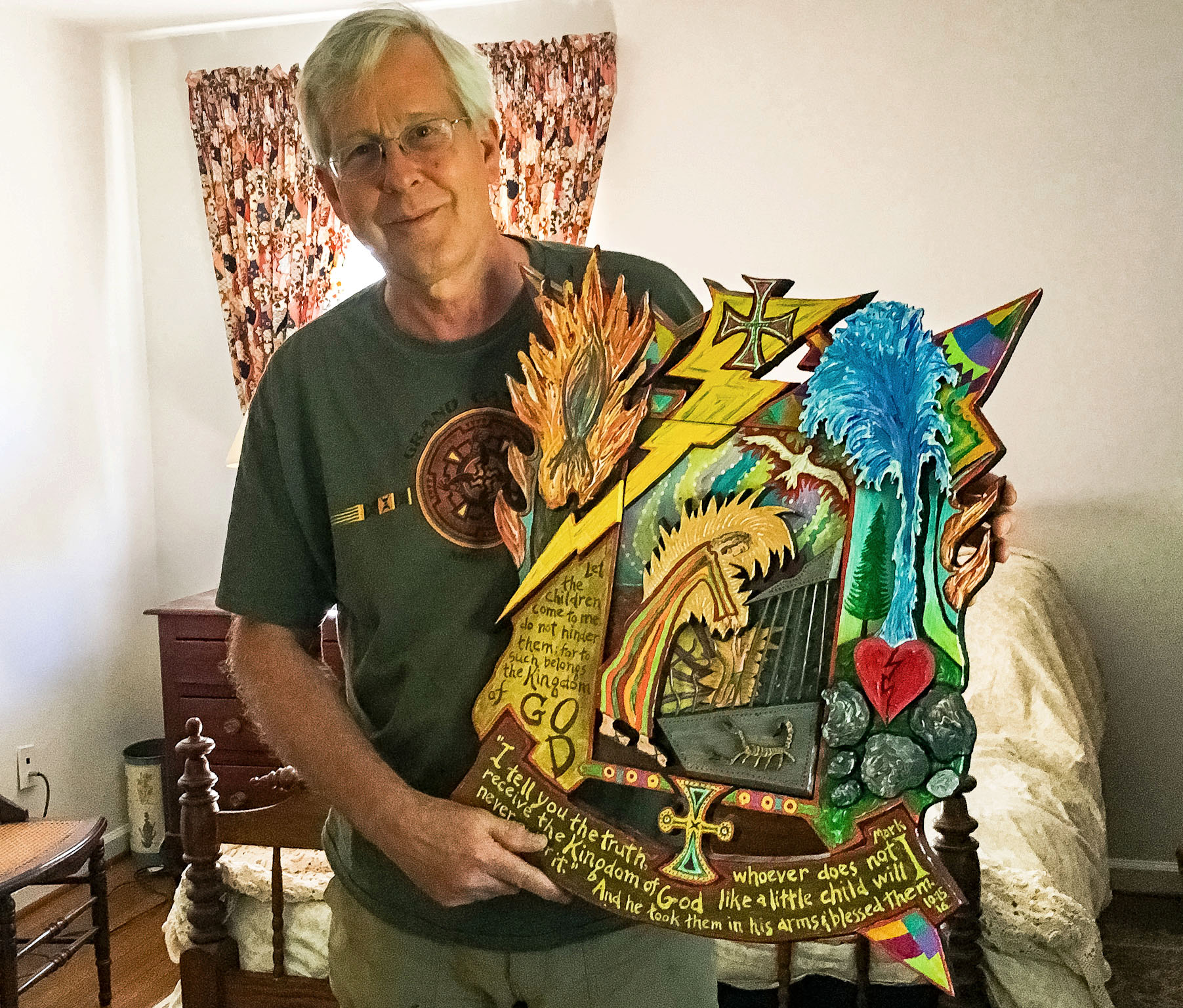
Carleton Bakkum holding a folk art piece depicting Jesus breaking a child free from his cage, accompanied by a quote from the book of Mark. He experienced the inspiration for this piece while on a vision quest in Utah.
By Emily Lopez
Many people in my town know the name Carleton Bakkum.
A soft-spoken pillar of the community, Bakkum served for 30 years as the Rector at Grace Episcopal Church in Yorktown, Virginia, where he gained a reputation as a kind of spiritual renaissance man who led his congregation into the 21st century with a gentle, guiding hand.
Since retiring in 2019, Bakkum has finally been able to refocus his creative side. He’d learned photography at 14, and music has always been an important part of his life. But it was visual arts—folk art, in particular—that seemed to set him free.
“I was going crazy inside,” he told me. “Something had to be expressed.”
Cheered on by his wife, Elsa, and their three sons, Carleton began creating wood sculpture in his garage without a single woodworking or art class. He began with vague, crude designs. This, he says, is the very foundation of folk art, versus other, more commercial art forms. “There are no rules.”
For inspiration, Bakkum looked to Howard Finster, another man of God who would become one of America’s folk art pioneers. A Baptist preacher from Georgia, Finster believed folk art should be made with stuff left over, says Bakkum. That alone was liberating; there’s a lot of scrap in the world.
As a priest Carleton had to express everything through words and abstract thought. “My work was so verbal, everything had a fuzzy edge, I couldn’t always track how something would end up.”
It was a machine in his workshop, the electric scroll saw, that helped him find his edge. When he started using that precise, fine-bladed saw, his work took off.
A scroll saws’ “cut is real and solid,” Bakkum said, adding that folk art is very “body-centered.” Everything results from one’s own movements, including the painting process, which he describes as “moving colors around.” When a piece is done, it’s there—you can hold it, move it, hang it on the wall. Unlike dance and music, which are ephemeral, physical art lasts.
“Yesterday the piece did not exist, but now it has a life of its own, and you have no idea who will see it or what it will do.” One thing is for certain: His large colorful pieces, full of complex cuts and dimensions, are almost as well known as his calm and thoughtful demeanor.
As an Episcopal priest, Bakkum helped many people cope with trauma, grief, and various forms of pain, so he understands, deep down, how the coronavirus is weighing on our souls.
The pandemic “is creating a shared trauma among all of us,” he says, “but it also brings people’s individual trauma to the surface.” Tending to that trauma is important, and art can help.
“Creating has many healing abilities, but so many people don’t like creating anything because it makes you vulnerable.” Yet it’s that vulnerability, he says, that promotes the healing. Making art “is a way to break up what gets stuck in us,” and to “express our unseen world.”
Getting creative can help all of us cope with this difficult time, he says, adding a word of advice: Don’t get hung up on the end result.
“Just give your inner child a place to play.”

